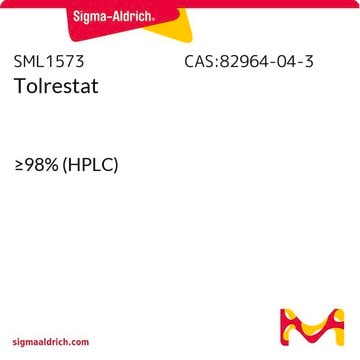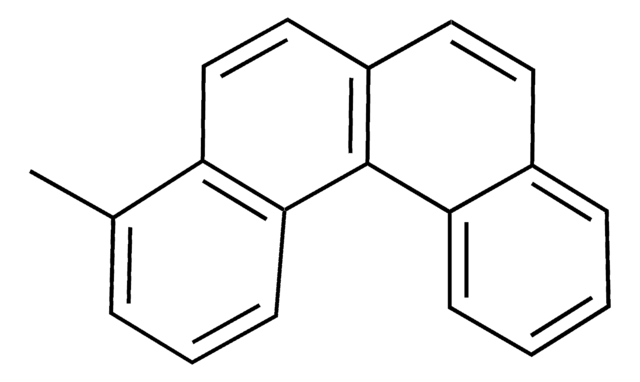SML0527
Epalrestat
≥98% (HPLC)
Synonym(e):
(5Z)-5-[(2E)-2-Methyl-3-phenyl-2-propen-1-ylidene]-4-oxo-2-thioxo-3-thiazolidineacetic acid
About This Item
Empfohlene Produkte
Qualitätsniveau
Assay
≥98% (HPLC)
Form
powder
Lagerbedingungen
protect from light
Farbe
yellow to orange
Löslichkeit
DMSO: 5 mg/mL, clear (warmed)
Lagertemp.
−20°C
SMILES String
S1\C(=C/C(=C/c2ccccc2)/C)\C(=O)N(C1=S)CC(=O)O
InChI
1S/C15H13NO3S2/c1-10(7-11-5-3-2-4-6-11)8-12-14(19)16(9-13(17)18)15(20)21-12/h2-8H,9H2,1H3,(H,17,18)/b10-7+,12-8-
InChIKey
CHNUOJQWGUIOLD-NFZZJPOKSA-N
Anwendung
- in the dahomey larvae diet fed forDrosophila
- for non-irradiated and X-ray irradiated human aldose reductase
- to test its protective effect in mice with bleomycin-induced pulmonary fibrosis
Biochem./physiol. Wirkung
Leistungsmerkmale und Vorteile
Sonstige Hinweise
Lagerklassenschlüssel
11 - Combustible Solids
WGK
WGK 3
Flammpunkt (°F)
Not applicable
Flammpunkt (°C)
Not applicable
Hier finden Sie alle aktuellen Versionen:
Analysenzertifikate (COA)
Die passende Version wird nicht angezeigt?
Wenn Sie eine bestimmte Version benötigen, können Sie anhand der Lot- oder Chargennummer nach einem spezifischen Zertifikat suchen.
Besitzen Sie dieses Produkt bereits?
In der Dokumentenbibliothek finden Sie die Dokumentation zu den Produkten, die Sie kürzlich erworben haben.
Kunden haben sich ebenfalls angesehen
Unser Team von Wissenschaftlern verfügt über Erfahrung in allen Forschungsbereichen einschließlich Life Science, Materialwissenschaften, chemischer Synthese, Chromatographie, Analytik und vielen mehr..
Setzen Sie sich mit dem technischen Dienst in Verbindung.














